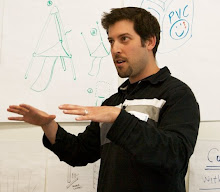 I attended the Greener by Design conference in San Francisco last week. The afternoon speaker from the first day, Amnon Levav from SIT International, explained the set of tools his company has developed to come up with new innovative solutions to problems called Systematic Inventive Thinking. SIT's philosphy is that inventive solutions share common patterns, and therefore, these tools help one identify the patterns they are in and other patterns to look at for solutions.
I attended the Greener by Design conference in San Francisco last week. The afternoon speaker from the first day, Amnon Levav from SIT International, explained the set of tools his company has developed to come up with new innovative solutions to problems called Systematic Inventive Thinking. SIT's philosphy is that inventive solutions share common patterns, and therefore, these tools help one identify the patterns they are in and other patterns to look at for solutions.I can best explain how one of SIT's tools, Attribute Dependancy, works by using an example from Tom Szaky of TerraCycle, another presenters at the conference. TerraCycle was created by looking at waste differently. Instead of waste being something you pay someone to take "away", TerraCycle's business plan is to take waste, process it, and turn it into a useful product. TerraCycle changed the dependancy from waste being the end of a process to waste being the beginning of a new process. It changed the way a company relates to waste. Attribute Dependancy is about creating dependance on something that wasn't there before. It is a great tool to get new ideas flowing in your ideation sessions.




